I love my job. I love being an art lawyer. I am grateful for the opportunity to work with artists, collectors, and art market participants. I am honored to have represented sovereign governments in landmark cultural heritage matters, including Italy and Greece. When I’m not working, my thoughts often return to art. Somehow, I never escape from work, even when I’m on vacation. And so it seems that every trip confronts me with art crime issues. But then again, I seem to pursue art stories everywhere I go.
ART CRIME IN ITALY

La Serenissima. Copyright: Leila A. Amineddoleh
During a recent week away from the office, I traveled to Italy (one of my favorite places in the world, a country I have the privilege of representing, and the country with the greatest number of UNESCO World Heritage Sites). As my family and I meandered through the Veneto, we stopped in lovely towns that all played host to art crimes. One was Treviso, the site of a forgery scandal involving the sale of hundreds of millions of dollars of forged paintings. Another stop was Venice. Affectionately known as La Serenissima, it has been the beautiful backdrop of numerous art crimes, including one particularly brazen theft from the wrongly named “Gentleman Thief.” (Can a thief ever truly be a gentleman?) I referenced another well-known crime, the theft of a14th-century folio from an illuminated manuscript by Doge Andrea Dandolo, in an article I wrote for Artsy back in 2020.
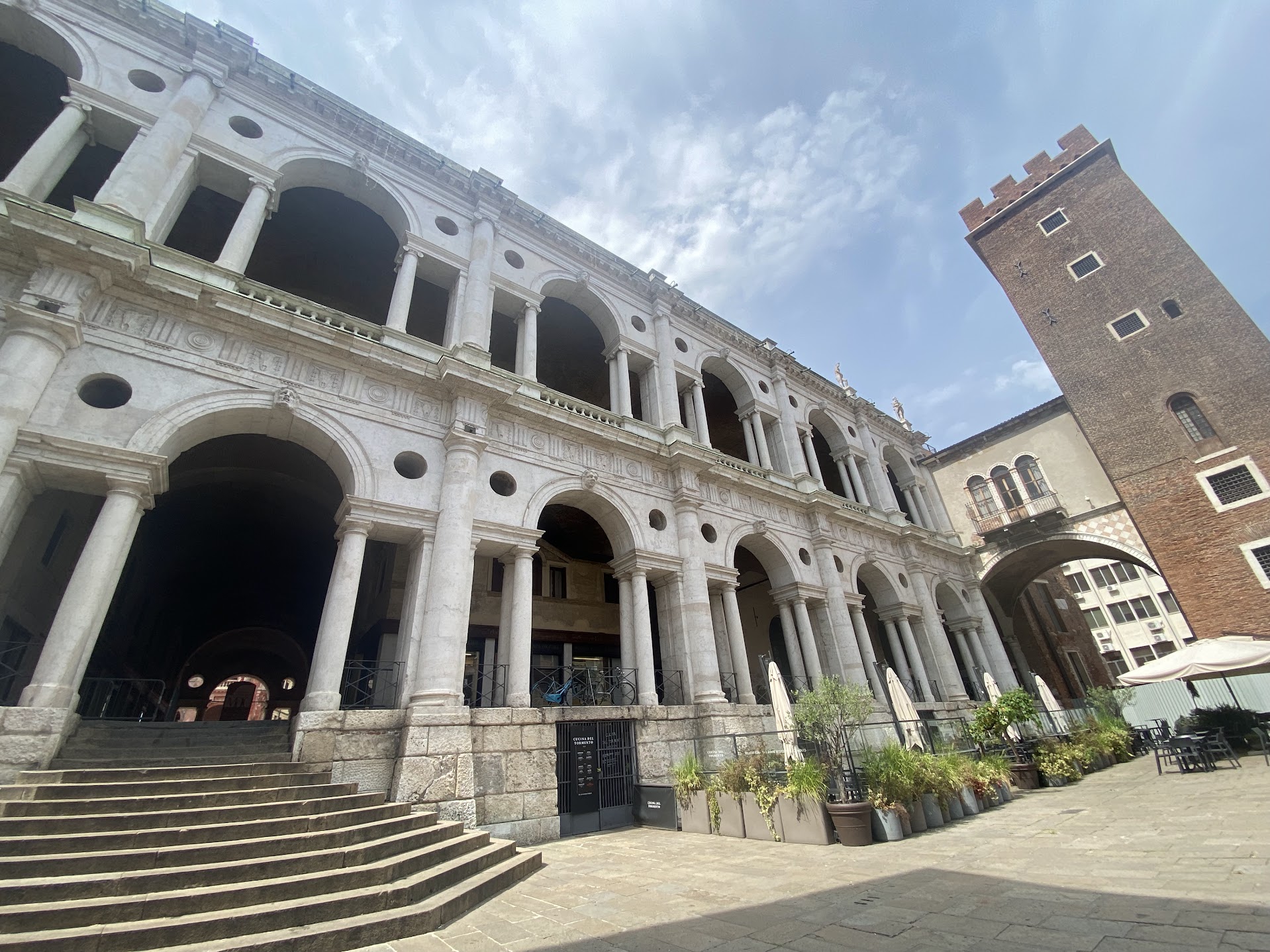
Palladian architecture in Vicenza. Copyright: Leila A. Amineddoleh
Sadly, a more recent art crime in the Veneto involved two American soldiers who epitomized the recent trend of bad tourism. Last year, the soldiers foolishly spray painted graffiti onto Vicenza’s basilica, designed by famed Andrea Palladio (considered by some to be the father of modern architecture. The town of Vicenza, a literal open-air museum of Italian Renaissance architectural gems, has taken this matter seriously. The soldiers now face jail time and heavy fines.
VERONA AND ART THEFTS
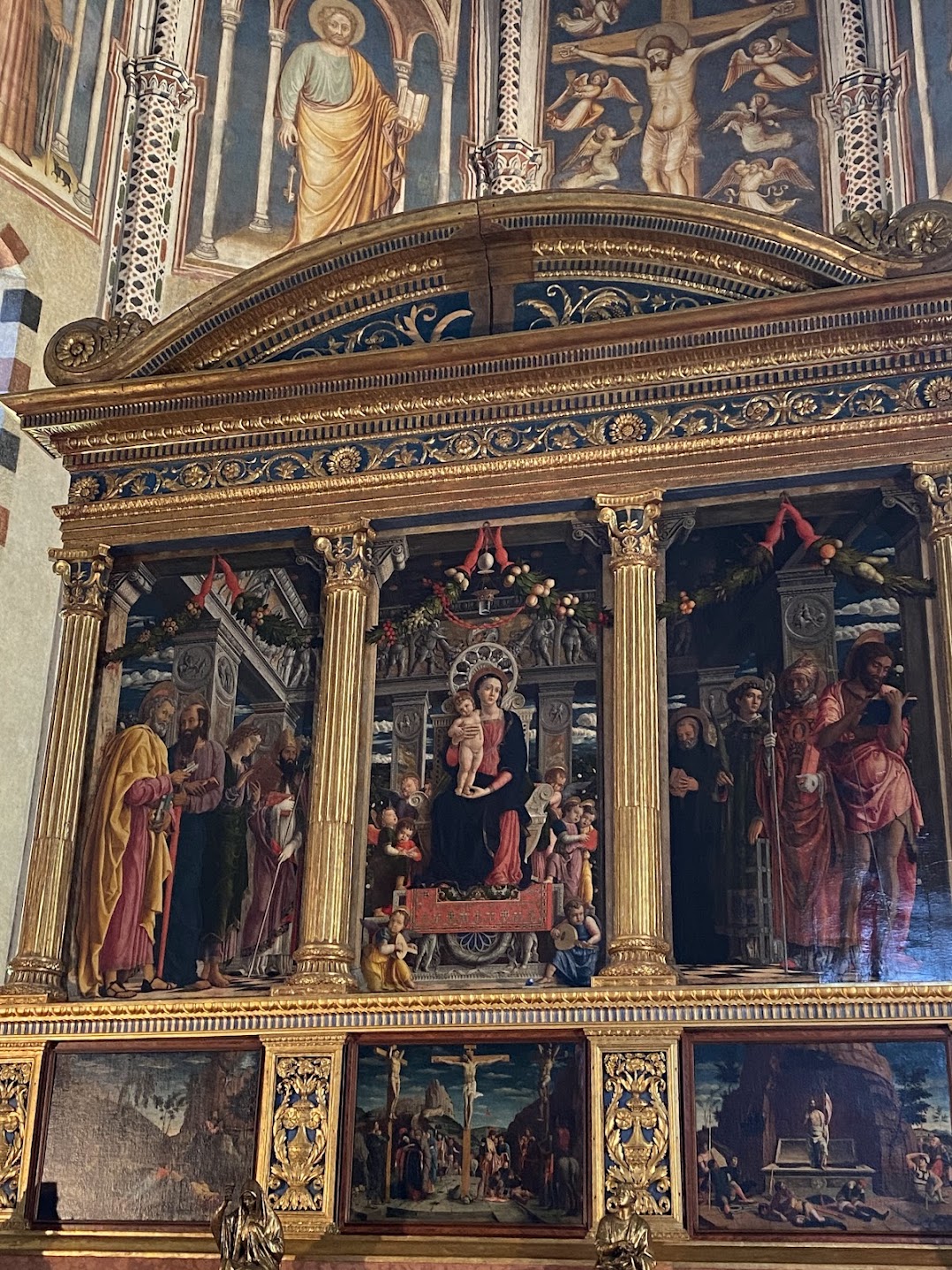
Altarpiece by Andrea Mantegna. Copyright: Leila A. Amineddoleh
For me, the art crime winner (or more accurately, the loser) is Verona. Serving as the inspiration for the Bard’s Two Gentlemen of Verona and Romeo and Juliet (many of the city’s establishments are more than happy to post Shakespearean references), Verona has long been one of my favorite places in Italy. Besides literary inspiration, the city is known for its 2000-year-old intact pink-hued arena. One of the best-preserved ancient structures of its kind, the town still hosts live events in the theatre. Its summer opera festival is world famous. Its magic and beauty have moved people for centuries.
Sadly, Verona has also inspired art crimes. During the Napoleonic Wars, buildings and sites across the city were destroyed. One was the Abbey of San Zeno which was part of the present-day Basilica of San Zeno. Today, only a brick tower and cloister survive from the abbey. Unfortunately, the artworks inside the Basilica were not left unscathed.
The San Zeno Altarpiece by Andrea Mantegna was painted in Padua and likely arrived in Verona in 1459. It is storied to be the first Renaissance painting seen in Verona. Although it appears to be executed in oil due to its rich colors, Mantegna painted it in tempera. The large work, which includes an image of Saint Zeno, had a turbulent life. It was looted by Napoleonic Forces in 1797 and returned in 1815, but in an incomplete state. The predella panels were never returned from France. When the altarpiece was finally reinstalled in 1871, copies of the missing panels by Paolino Caliari were inserted.
To protect the piece from the ravages of WWI, the altarpiece was transported to safety in 1915. It was sent to Florence for safekeeping. After the war, it was sent to Verona’s Castelvecchio (“old castle”) and then to Pinacoteca di Brera (in Milan) for restoration. It returned home to San Zeno in 1927. Shockingly, in 1973 the left panel was stolen and used as ransom. The thief was paid 8 million lire and the panel was returned.
CASTELVECCHIO
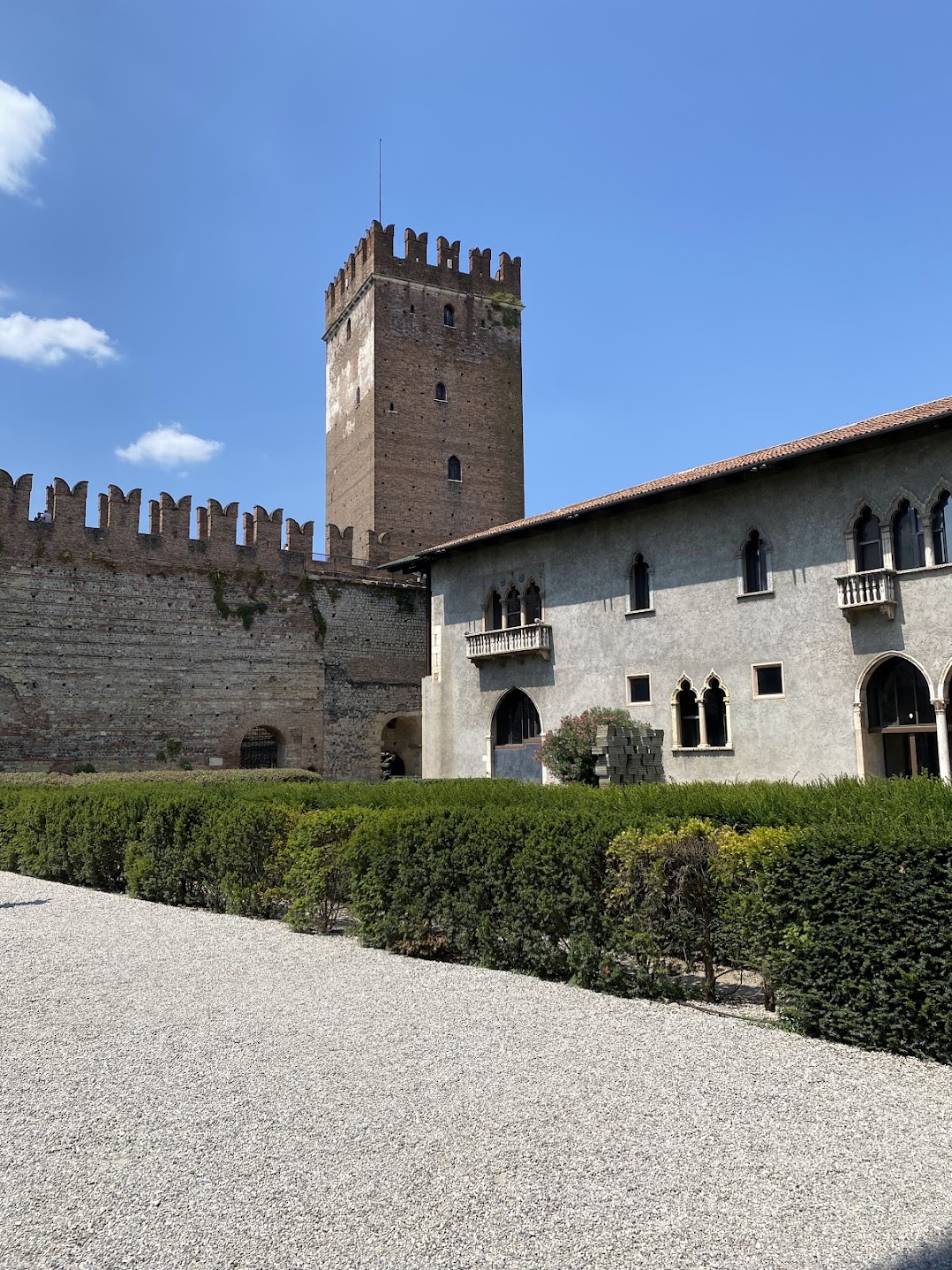
Castelvecchio. Copyright: Leila A. Amineddoleh
Tragically, the city is still not immune to art theft. In 2015, Verona’s elegant Castelvecchio (“old castle”) was the scene of a shocking crime. The Medieval Castelvecchio looks out over a gorgeous bridge that spans the Adige River. The castle, likely built on top of a Roman fortress, served many roles since its construction during the Middle Ages, between 1354 and 1376. It is known as an important military structure built by the Scaligeri family, with the bridge serving as a safety route for members of the dynastic family to flee during times of conflict.
The castle was taken by Venetian forces, and eventually it was damaged by French troops during the Napoleonic Wars. It also faced destruction during WWII, when the bridge was demolished by the German army during its retreat in 1945. The bridge was rebuilt in 1949. During that same period, the castle was also damaged. But it was rebuilt a decade later by Carlo Scarpa. The castle now serves as a museum.
Castelvecchio’s museum now houses an impressive gallery of paintings. One night in 2015, the collection was the victim of an art heist. 17 paintings were stolen as a crime of opportunity due to subpar security; three men entered the museum before the building’s alarm system was activated for the night.
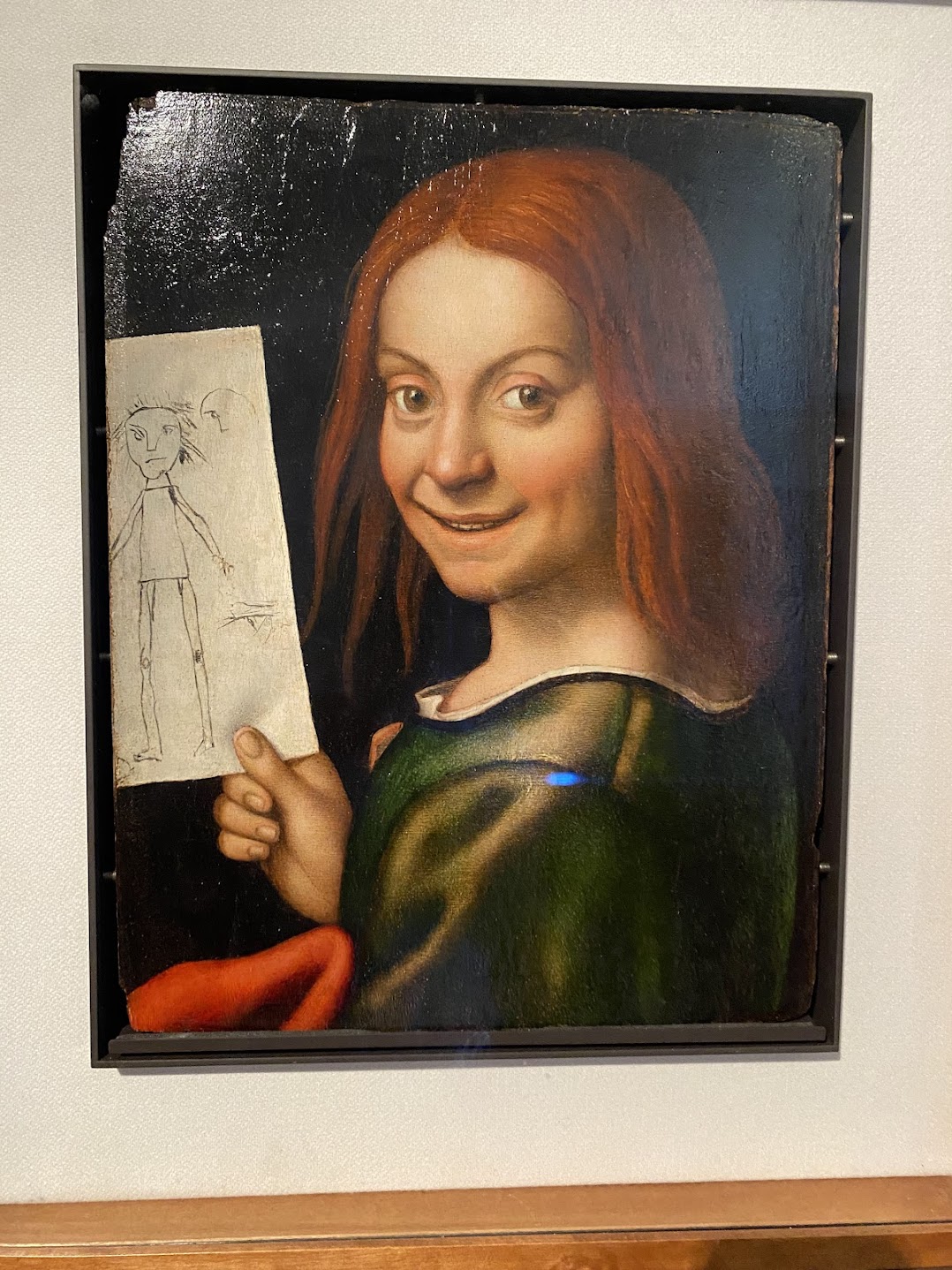
Portrait of a Young Boy Holding a Child’s Drawing
The stolen paintings were brought to Ukraine. They were wrapped in black plastic drop cloths and buried behind scrubs. The next year, upon their discovery, the works were returned to Italy. The pieces suffered minor damage. It is believed that the theft was an inside job, with 12 people arrested in connection to the crime who were all convicted in 2020. Included in the group was a security guard and his Eastern European girlfriend. The judge handed down sentences of between five and 10 years for all thieves.
Included in the theft were Gian Francesco Caroto’s Portrait of a Young Boy Holding a Child’s Drawing. Painted in 1520, this unusual work has captivated viewers due to its curious subject matter. Carota (“carrot” in Italian) painted a child with red hair (a “carrot-top”) so many believe the work is a self-portrait of the artist as a boy or a portrait of the artist’s son. The image features the child holding a drawing. Is this a drawing actually done by the child? If so, then this playful work may include an artwork within an artwork or even a work of joint authorship.
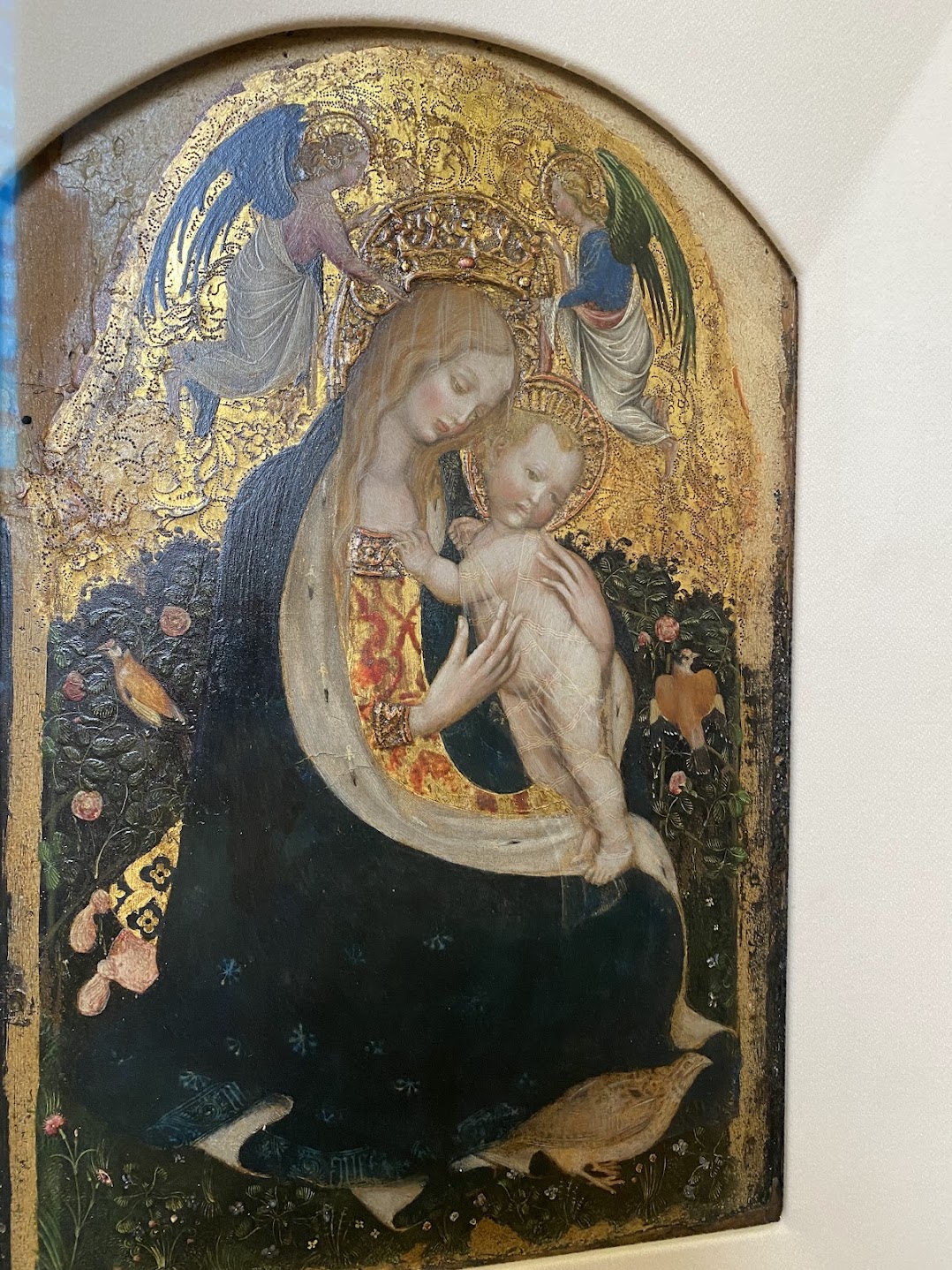
Madonna of the Quail
Another stolen superstar from the Castelvecchio was Pisanello’s Madonna of the Quail. Completed in 1420, the late Gothic style painting may have been the centerpiece of a domestic devotional work. The valuable work is known for the quality of its rendering of flora and fauna, set against a brilliant gold background.
While Verona has inspired love stories, artworks, and movies that reference two of best-known star-crossed lovers, the city has also faced its fair share of art crime. Perhaps this is not surprising in Italy, a country with an abundance of art and heritage.